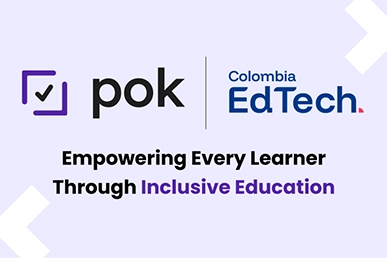🌎 Introduction: The Paradigm Shift in Education and Work
For decades, formal education was dominated by long degrees: 4–6 years for a bachelor’s, 2 years for a master’s, plus expensive courses. However, the speed of technological change has made this model obsolete for many sectors. Today’s job market demands agility, flexibility, and continuous learning.
In this context, digital microcredentials were born: short programs focused on specific competencies and issued in verifiable digital formats. This model complements, rather than replaces, traditional degrees, making them more dynamic: allowing students and professionals to update their skills in weeks, not years.
📚 A Brief Historical Overview
Although the term microcredential began gaining popularity in the past decade, the idea of modular credentials has roots in technical education and industry-recognized certificates. The difference today is:
- Scale: exponential global growth thanks to online platforms and university–industry partnerships.
- Digitization: credentials are no longer static PDFs, but verifiable blockchain-secured assets, interoperable and easily shareable on LinkedIn.
- Formal Recognition: governments and universities are starting to integrate them into qualification frameworks and credit systems.
📊 2025 Statistics & Data
- 96% of employers believe microcredentials strengthen a candidate’s job application.
- 90% are willing to offer higher starting salaries to those who hold them.
- 87% have hired at least one candidate with a microcredential in the past year.
- 94% of students say they build essential career skills.
- 94% want them integrated into degree programs.
- 53% of institutions already recognize them as academic credit.
- 82% plan to expand their microcredential offering.
- 20% average reduction in onboarding costs reported by companies.
- 28% of workers received a salary increase after completing a microcredential.
Additionally, recent reports show that the global microcredential market will exceed USD 3.5 billion in 2025, with a projected annual growth rate above 17% through 2030. This means the number of credentials issued will keep multiplying, with strong presence in technology, healthcare, education, and sustainability sectors.
💼 Impact on Employability and Career Development
Microcredentials have a direct effect on professional growth:
- Differentiation: candidates with relevant microcredentials show initiative and continuous learning.
- Promotions and Raises: certified employees advance faster; 21% reported being promoted in under 12 months.
- Upskilling and Reskilling: they help workers at risk of automation quickly retrain for new roles.
- Digital Visibility: sharing them on LinkedIn increases professional exposure and recruiter outreach.
🎓 Strategic Benefits for Universities
Institutions adopting microcredentials can:
- Improve retention: visible, short-term milestones keep students engaged.
- Create “stackable degrees”: programs where microcredentials accumulate into full diplomas.
- Attract new audiences: professionals seeking targeted, up-to-date learning.
- Generate additional revenue: short programs for companies or alumni.
- Align curriculum with the job market: updating competencies faster than traditional curricula allow.
💡 LATAM Example: Several universities in Mexico and Chile already offer microcredentials in digital and entrepreneurship skills, with participation rates 30% higher than traditional courses.
🏢 Benefits for Companies
Organizations benefit as well:
- Faster onboarding: new hires with relevant microcredentials integrate quicker.
- Internal certification: companies can create their own microcredential pathways aligned to roles.
- Impact measurement: digital credentials generate data on who trained, on what topics, and with what results.
- Employer branding: showing commitment to quality learning boosts talent attraction and retention.
⚠️ Challenges That Remain
- Lack of clear standards: not all microcredentials meet the same quality level.
- Uneven regulation: some countries lack legal frameworks to grant academic credit.
- Digital divide: connectivity barriers in LATAM limit access for some populations.
- Market saturation: too many low-value credentials could undermine trust.
🔮 2025 and Beyond: Key Trends
- GenAI integration: personalized learning paths recommending the next microcredential based on performance data.
- Microcredentials as “talent currency”: increasingly accepted as partial substitutes for work experience.
- Greater interoperability: use of OpenBadge 3.0 and ELM standards for cross-institution verification.
- NFT credentials: blockchain issuance to guarantee ownership and traceability.
- Human skills focus: communication, leadership, and critical thinking remain highly demanded.
🌟 How POK Leads This Transformation
POK is at the intersection of these trends:
- Issues blockchain-verifiable digital credentials.
- Enables real-time visualization and validation.
- Offers API integrations with LMS, HR tech, and LinkedIn.
- Provides analytics and dashboards to measure employability impact.
- Supports stackable microcredential programs, ensuring traceability of each learner’s achievements.
📌 Conclusion
Microcredentials are not a fad — they are the response to a labor market demanding flexibility, agility, and measurable results. In 2025, institutions and companies that adopt them will gain a competitive edge in talent attraction, educational innovation, and employability.
Want to implement microcredentials in your organization or institution?
👉 Explore our features and transform the way you recognize skills and achievements.

.png)


